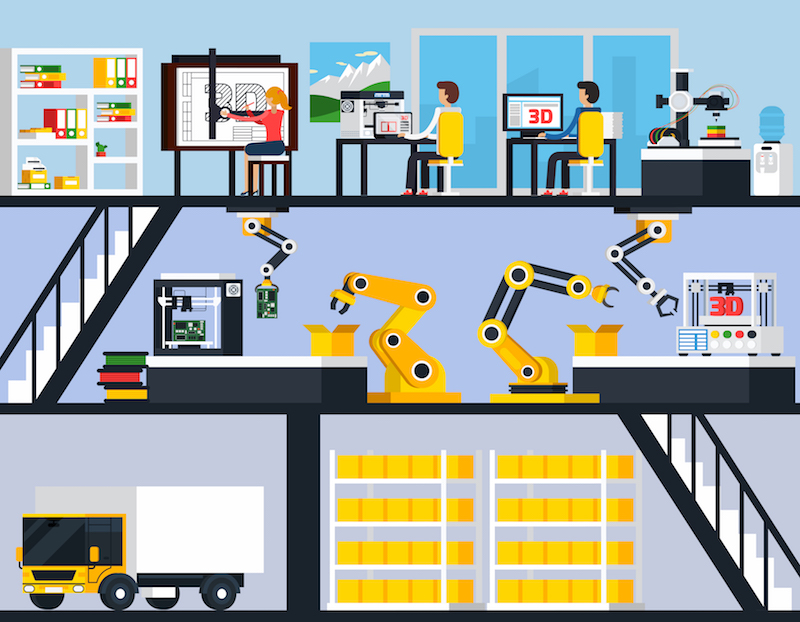
This is a guest article from SolidProfessor. See their Design for Manufacturing resources including DFM – The Fundamental Best Practice.
Manufacturing–past and present
When thinking about manufacturing, most people probably think of big warehouses, assembly lines, and trucks coming in and out to ship product all over the country. In movies, manufacturing jobs are depicted as tough, labor-intensive jobs where employees perform the same tasks over and over again. This is a drastic simplification of what is one of the most complex and impactful industries in the US, and around the world.
Manufacturing traditionally has promoted growth and employment opportunities. Think about the automotive industry. Henry Ford introduced the first Model T in 1908 and today there are about 2.44 M auto workers. The assembly line immediately created tons of jobs and the automotive industry grew instantly.
While manufacturing still remains a complex and impactful industry, instead of primarily promoting growth and employment opportunities, it’s now a sector that promotes innovation and productivity. This huge shift in priorities puts the industry at a major crossroads of change.
Manufacturing in the future
So what does this shift from growth and employment to innovation and productivity mean? It means decreased labor costs and an increase in manufacturing technology. It means robots and automation. Digital sensors and programmed chips. These technologies change the way manufacturers produce because a single machine can increase productivity by as much as 70%, and chips can be programmed to feed real-time product performance information back to the manufacturer. There’s a lower risk of unplanned shut downs and down time because sensors inside machines will alert manufacturing teams of errors in processes, when parts are wearing out, and techniques for improving overall efficiency.
These productivity changes directly lead to innovating faster than ever before. Real time product feedback means real time product changes. Productivity will no longer give someone a competitive edge, the speed at which they innovate will.
What does this mean for you?
The manufacturing industry is directly impacted by design. If the world of manufacturing is changing, then design must also change. The more CAD and manufacturing are aligned, the more innovative and productive both areas will be.
In order to align with the changing manufacturing industry, designers must understand the challenges manufacturers are up against. If a designer can understand the downstream effects of his/her design, then he/she will help increase the speed of innovation because change orders and non-manufacturable designs will be eliminated. By eliminating change orders and non-manufacturable designs, designers will be able to design more products for manufacturing to produce, drastically increasing throughput and profit.
You can become a better designer by learning to design for manufacturability. If you’re looking to brush up your skills, consider working to earn a Technical Certificate in SolidProfessor’s Introduction to Design for Manufacturing course.
